Caryn’s Thoughts
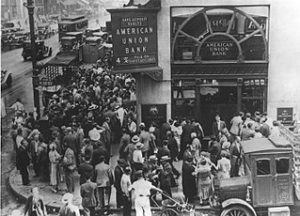 When we think of a bank, we expect that they will have an unlimited amount of money to cover any withdrawals the public might care to make. That thought really isn’t accurate at all. Banks typically hold only a fraction of deposits in cash at any one time, and lend out the rest to borrowers or purchase interest-bearing assets like government securities. As normal banking procedures occur, the money placed in bank care by depositors is loaned out to other people, but then replaced plus interest. The cash flow in the bank normally rolls merrily along in deposits, withdrawals, loans, and payments…as long as nothing goes wrong that is.
When we think of a bank, we expect that they will have an unlimited amount of money to cover any withdrawals the public might care to make. That thought really isn’t accurate at all. Banks typically hold only a fraction of deposits in cash at any one time, and lend out the rest to borrowers or purchase interest-bearing assets like government securities. As normal banking procedures occur, the money placed in bank care by depositors is loaned out to other people, but then replaced plus interest. The cash flow in the bank normally rolls merrily along in deposits, withdrawals, loans, and payments…as long as nothing goes wrong that is.
The stock market crash of October 1929 left the American public in a panic, about the economy, the future, and the stability of the banks. People were spending less and so the investments and loans began to decrease, which lead to a decline in production and employment. The ensuing snowball effect was further compounded when the nation’s economic woes led to a series of banking panics or “bank runs,” during which large numbers of anxious people withdrew their deposits in cash, forcing banks to liquidate loans, and ultimately leading to bank failure. The largest collapse was New York’s Bank of the United States in December 1931. The bank had more than $200 million in deposits at the time, making it the largest single bank failure in American history. Wealthy people began pulling their investment assets out of the economy. Bankruptcies were becoming more common, and peoples’ confidence in financial institutions, such as banks, rapidly eroded. Many of those people never fully trusted banks again after that. Some 650 banks failed in 1929, and the number rose to more than 1,300 the following year.
The last wave of bank runs continued through the winter of 1932 and into 1933. By that time, Democrat Franklin D. Roosevelt had won the presidential election over the Republican incumbent, Herbert Hoover. Almost immediately after taking office in early March, Roosevelt declared a national “bank holiday.” All banks were closed until they were determined to be solvent through federal inspection. Roosevelt called on Congress to come up with new emergency banking legislation to further aid the ailing financial institutions of America. The Banking Act of 1933 established the FDIC, or Federal Deposit Insurance Corporation. It also separated commercial and investment banking, and for the first time extended federal oversight to all commercial banks. The FDIC would insure commercial bank deposits of $2,500 (later $5,000) with a pool of money collected from the banks. Small, rural banks were in favor of deposit insurance, but larger banks, who worried they would end up subsidizing smaller banks, opposed it. The public supported deposit insurance overwhelmingly. Many hoped to recover some of the financial losses they had sustained through bank failures and closures. The FDIC did not insure investment products such as stocks, bonds, mutual funds or annuities. No federal law mandated FDIC insurance for banks, though some states required their banks to be federally insured.
In 2007, problems in the subprime mortgage market precipitated the worst financial crisis since the Great Depression. Twenty-five US banks had failed by late 2008. The most notable bankruptcy was Washington  Mutual Bank, the nation’s largest savings and loan association. A downgrade in the bank’s financial strength in September 2008 caused customers to panic despite Washington Mutual’s status as an FDIC-insured bank. Depositors withdrew $16.7 billion from Washington Mutual Bank over the next nine days. The FDIC subsequently stripped Washington Mutual of its banking subsidiary. It was the largest bank failure in US history. Congress passed the Dodd-Frank Wall Street Reform and Consumer Protection Act in 2011, which permanently raised the FDIC deposit insurance limit to $250,000 per account. The Dodd-Frank Act expanded the FDIC’s responsibilities to include regular risk assessments of all FDIC-insured institutions.
Mutual Bank, the nation’s largest savings and loan association. A downgrade in the bank’s financial strength in September 2008 caused customers to panic despite Washington Mutual’s status as an FDIC-insured bank. Depositors withdrew $16.7 billion from Washington Mutual Bank over the next nine days. The FDIC subsequently stripped Washington Mutual of its banking subsidiary. It was the largest bank failure in US history. Congress passed the Dodd-Frank Wall Street Reform and Consumer Protection Act in 2011, which permanently raised the FDIC deposit insurance limit to $250,000 per account. The Dodd-Frank Act expanded the FDIC’s responsibilities to include regular risk assessments of all FDIC-insured institutions.

 My nephew, Dave Chase, joined our family when he married my niece, Toni. Dave has a dry sense of humor, and is quite practical, which is completely opposite of Toni, who is more emotional, than practical…according to her mom, Cheryl. Dave and Toni love to banter back and forth, and it keeps the whole family laughing. They tease each other, and it can be quite entertaining. Still, it is teasing, and these two really bring out the best in each other.
My nephew, Dave Chase, joined our family when he married my niece, Toni. Dave has a dry sense of humor, and is quite practical, which is completely opposite of Toni, who is more emotional, than practical…according to her mom, Cheryl. Dave and Toni love to banter back and forth, and it keeps the whole family laughing. They tease each other, and it can be quite entertaining. Still, it is teasing, and these two really bring out the best in each other.
When Toni and Dave met, Dave did not try to become a father to her son James, who has a dad. Wisely, Dave set out to become James’ friend. He won James over, and they are good friends. That has endeared Dave to the whole family! Dave also loves having 2 child pups. He loves taking them to the dog park in good weather especially, but they go no matter what the weather looks like…rain, shine, wind, or snow. If they can get to the dog park, Dave and the pups are going for a walk. Twice on the weekend days. Toni joins them on weekends. The whole family loves their dogs. The dogs must have the best of everything, including toys, beds, comfort, and…a maze in snowy weather to exercise and entertain themselves in! He loves to take the dogs kayaking too. No effort is to great to be undertaken for the sake of the dogs!
Dave has always been full of energy. My niece tells me that he hits the ground running the second his feet move from the bed to the floor. Dave hasn’t always loved the length and cold of the Wyoming winter, but he got a snow blower, and he loves to keep his driveway clear. Needless to say, when Dave awoke to some six to ten inches of snow on his birthday morning, he was excited and headed out to “play” with his machine…never mind  that it’s still coming down heavily. While his snow blower has helped with his winter blues, he has managed to find another release in the form of an annual golfing trip to Phoenix with the boys. It is a trip that he plans every year and brags that “the head count keeps on growing.” While Dave is there he always heads to Chase field to catch a game with his little brother Dan and nephew Ty, always in the hope of seeing the Dodgers, but this last April 2019 he had to settle for the Cubs.
that it’s still coming down heavily. While his snow blower has helped with his winter blues, he has managed to find another release in the form of an annual golfing trip to Phoenix with the boys. It is a trip that he plans every year and brags that “the head count keeps on growing.” While Dave is there he always heads to Chase field to catch a game with his little brother Dan and nephew Ty, always in the hope of seeing the Dodgers, but this last April 2019 he had to settle for the Cubs.
Dave and Toni took a trip…just the two of them, to Marco Island where they hit a different brewery every day, ate seafood every night, and had a great time all week including their last day there when they took a trip to Venice Beach. They learned how to shell for shark teeth at Venice Beach. They also “learned” how to lock their water, sunblock, beach towels and cell phones in the car while at Venice Beach, as well as how to lose their car keys in the ocean while at Venice Beach, and…they learned how to thank God for putting a little boy in the water that found their keys…30 yards from where they were looking for them.
They took a family trip to Escondido California, James got to go on this trip too. They all agreed that it was one of the best trips they have ever had. It exceeded all of their expectations. They went to the Miramar Air show, which made them feel very proud to be Americans, and to Cabrillo National Monument to name a few. Other than that trip, they took numerous overnight trips, saw a few concerts, watched the dodgers play, and of course, Dave made it to every home game for the Wyoming Cowboys.
Dave is good to his mother-in-law, Cheryl too. In winter, if the snow gets bad, Dave checks with her to see if anyone has shoveled her walk and if they haven’t, he will drive all the way across town to shovel for her! In the 
 spring and fall he, along with the rest of her family, cleans her yard so it’s ready for the coming season. These are kindnesses she appreciates so much more than words can say! Of course, mostly Cheryl loves that he takes care of Toni. He has always seen to it she has a good car to drive, a lovely home to live in, and that all her needs and wants are met. He’s practical and good in his heart! He considers what is needed in the family, and helps bring those things to pass. To Cheryl, these are excellent qualities! I agree. Today is Dave’s birthday. Happy birthday Dave!! Have a great day!! We love you!!
spring and fall he, along with the rest of her family, cleans her yard so it’s ready for the coming season. These are kindnesses she appreciates so much more than words can say! Of course, mostly Cheryl loves that he takes care of Toni. He has always seen to it she has a good car to drive, a lovely home to live in, and that all her needs and wants are met. He’s practical and good in his heart! He considers what is needed in the family, and helps bring those things to pass. To Cheryl, these are excellent qualities! I agree. Today is Dave’s birthday. Happy birthday Dave!! Have a great day!! We love you!!
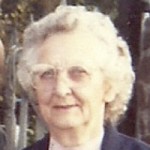
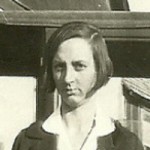 My husband’s grandmother, Vina Hein was a remarkable woman. I was quite impressed with her work ethic. That might seem a funny thing to say about a woman who no longer worked outside the home, but she was, nevertheless, dedicated to he work…her home. For most of her life, she lived as a pioneer woman, because while her home had many things, and was a normal stick built home, it did not have an indoor bathroom, even though the bathroom was somewhat completed. Water was the main concern, as well water was used, and there is always the concern of a well running dry, I suppose.
My husband’s grandmother, Vina Hein was a remarkable woman. I was quite impressed with her work ethic. That might seem a funny thing to say about a woman who no longer worked outside the home, but she was, nevertheless, dedicated to he work…her home. For most of her life, she lived as a pioneer woman, because while her home had many things, and was a normal stick built home, it did not have an indoor bathroom, even though the bathroom was somewhat completed. Water was the main concern, as well water was used, and there is always the concern of a well running dry, I suppose.
Grandma was born on Groundhog Day, February 2, 1909. Of course, we all know that the ground hog has a 50-50 chance of guessing right concerning winter, and I personally think that the latest Punxsutawney Phil, maybe doesn’t have its act together. Todays prediction was for an early spring, but…time will tell. According to statistics, the groundhog saw its shadow in 1909, so that should have been six more weeks of winter. I have no idea what the winter ended up like in Montana, but knowing what Montana winters are usually like, In would be surprised if the winter ended early.
Grandma Hein saw many changes over the years of her life. From the early days of automobiles and airplanes 
 to the more modern days of both before her passing. She saw telephones, and even the early days of cell phones. She was able to travel to the places where her children moved, and meet grandchildren, great grandchildren, and even 2nd great grandchildren. She lived a long and happy life, and yet we still never felt like she was with us long enough. Today, Grandma would have been 111 years old, but that would have been an unlikely birthday to have happened. Nevertheless, happy birthday in Heaven, Grandma Hein. We love and miss you very much.
to the more modern days of both before her passing. She saw telephones, and even the early days of cell phones. She was able to travel to the places where her children moved, and meet grandchildren, great grandchildren, and even 2nd great grandchildren. She lived a long and happy life, and yet we still never felt like she was with us long enough. Today, Grandma would have been 111 years old, but that would have been an unlikely birthday to have happened. Nevertheless, happy birthday in Heaven, Grandma Hein. We love and miss you very much.
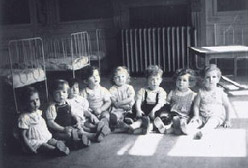 I was thinking about Sir Nicholas Winton, who saved 669 Jewish children from the brutal activities, and almost certain death that was being dealt out by Hitler during World War II. Of course, Sir Winton wasn’t the only person who stepped up to help wage their own battle against the Third Reich. Many people in Nazi occupied areas took in families in desperate need. When word is the deportations to the ghettos came down, some parents had to make the horrible choice to give their children to friends and neighbors to “hide” them in plain site, raising them as their own, and everyone hoping to be able to return them to their own parents after the war. The problem was that so many of the parents were killed in the camps.
I was thinking about Sir Nicholas Winton, who saved 669 Jewish children from the brutal activities, and almost certain death that was being dealt out by Hitler during World War II. Of course, Sir Winton wasn’t the only person who stepped up to help wage their own battle against the Third Reich. Many people in Nazi occupied areas took in families in desperate need. When word is the deportations to the ghettos came down, some parents had to make the horrible choice to give their children to friends and neighbors to “hide” them in plain site, raising them as their own, and everyone hoping to be able to return them to their own parents after the war. The problem was that so many of the parents were killed in the camps.
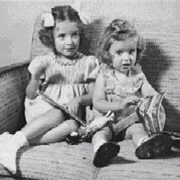
After the war was over, many of these children did not remember their parents. They were too young when they were given to people to care for. That created a new and almost more difficult situation. Some of the foster parents had fallen in love with the children in their care, and the viler knew no other family. Still, they were not their children. It was a heart wrenching situation. The other problem was that due to bombings, many of the homes housing these “hidden” children were gone, and they had no way to let anyone know where they had gone. That made it even more difficult to return the children. And some people couldn’t bear to part with the children anyway. 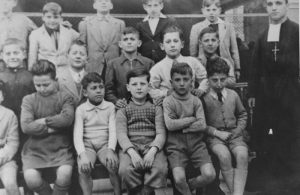 That left parents devastated and without recourse.
That left parents devastated and without recourse.
Some children were reunited with their parents quickly and some took years…if ever. I wonder about the ones that took years, because of the immense loss they must have felt over so much lost time. You just can’t get that time back, and you can’t change whatever the children endured in their lives. Everyone just had to let go of the past and go forward, as best they could. There was no way to go back to their pre-war lives. Each had changed, some were forever missing, and some were lost to the horrific hatred that was Hitler’s Third Reich.
 It is with great sadness that our family heard the news yesterday about our cousin, Larry Hein’s passing. Larry was the oldest child of my husband, Bob’s Uncle Eddie and Aunt Pearl Hein. Eddie passed away just three month and two weeks ago. Larry is dad to Dalton and Destiny, brother to Kim Arani, and brother-in-law to Mike Arani. It has been a rough few months for this family. My heart just aches for all of them.
It is with great sadness that our family heard the news yesterday about our cousin, Larry Hein’s passing. Larry was the oldest child of my husband, Bob’s Uncle Eddie and Aunt Pearl Hein. Eddie passed away just three month and two weeks ago. Larry is dad to Dalton and Destiny, brother to Kim Arani, and brother-in-law to Mike Arani. It has been a rough few months for this family. My heart just aches for all of them.
Larry was born and raised in Forsyth, and never really thought about going anywhere else. I remember on the visits my husband, Bob and our family took to visit our Forsyth family, Larry loved spending time with his cousins. Grandma and Grandpa  Hein has a ranch north of Forsyth, and the grandkids all loved to go out and play. There were three of the younger grandkids, Larry, Scott, and Kim Hein, and they spent as much time at their grandparents’ house as they could. It’s the normal way of kids, isn’t it. Whenever we went to visit, my kids couldn’t wait to play with their cousins. Even though Larry, Scott, and Kim were older than my girls, Corrie and Amy, they all played the kinds of games the younger kids wanted to play, and I always found that a sweet thing for
Hein has a ranch north of Forsyth, and the grandkids all loved to go out and play. There were three of the younger grandkids, Larry, Scott, and Kim Hein, and they spent as much time at their grandparents’ house as they could. It’s the normal way of kids, isn’t it. Whenever we went to visit, my kids couldn’t wait to play with their cousins. Even though Larry, Scott, and Kim were older than my girls, Corrie and Amy, they all played the kinds of games the younger kids wanted to play, and I always found that a sweet thing for  those kids to do. I miss those days.
those kids to do. I miss those days.
Larry was a mechanic in Forsyth, Montana, where he owned Hein Repair for a number of years now. He worked on just about anything that needed repair. He was a great dad, brother, and son. He was an asset to his community, and well liked by all who knew him. Yesterday, a heart attack took Larry from all those who loved him, and left an empty place in all our hearts. We are all now left to pick up the pieces of yet another heartbreaking loss in the family. My thoughts go out to this precious family. I am praying for comfort for all of them as they grieve this new loss and comfort each other on this sad time. Rest in peace Larry until we all meet again. We love and miss you very much.
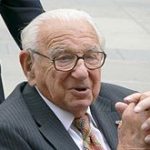 His name was Sir Nicholas George Winton MBE, but in his early years, he had not been bestowed with such an honor as knighthood. That came about much later in his life. Sir Winton was born on May 19, 1909 in Hampstead, London, England. He was a British humanitarian, born to German-Jewish parents, Rudolph Wertheim (1881–1937), a bank manager, and his wife Barbara (née Wertheimer, 1888–1978) who had emigrated to Britain. His parents had moved to London two years before he was born. The family name was Wertheim, but they changed it to Winton in an effort at integration. They also converted to Christianity, and Winton was baptized. God had a plan for Sir Winton’s life, although he would not know that for years.
His name was Sir Nicholas George Winton MBE, but in his early years, he had not been bestowed with such an honor as knighthood. That came about much later in his life. Sir Winton was born on May 19, 1909 in Hampstead, London, England. He was a British humanitarian, born to German-Jewish parents, Rudolph Wertheim (1881–1937), a bank manager, and his wife Barbara (née Wertheimer, 1888–1978) who had emigrated to Britain. His parents had moved to London two years before he was born. The family name was Wertheim, but they changed it to Winton in an effort at integration. They also converted to Christianity, and Winton was baptized. God had a plan for Sir Winton’s life, although he would not know that for years.
On the eve of World War II, Sir Winton knew what his calling had been, and he quietly set about orchestrating the rescue of 669 children, most of them Jewish, from Czechoslovakia. Sir Winton quickly found homes for the children and arranged for their safe passage to Britain. The operation was known as the Czech Kindertransport, which is German for “children’s transport, but it would not be called that right away. The transport was not a official operation, and was not sanctioned as such. He worked largely alone to set this up, and most people knew nothing about it for over 50 years, but the children did not forget the man they called the British Schindler, who had saved their lives.
Then, in 1988, he was invited to the BBC television program “That’s Life!.” It was a surprise party of sorts. Little 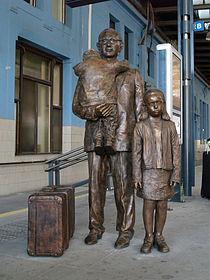 did Sir Winton know, but his secret was no longer such a secret. Arriving at the show, Sir Winton was seated in a room full of people he did not know. Soon, the truth was told to him, and he found out that the “audience” was in fact a number of the children he had rescued all those years ago. The grateful children, now grown adults, wanted to reunite with the man who had saved then all those years ago. It was the British press who celebrated him and dubbed him the “British Schindler.” Sir Winton was brought to tears, as he looked around him at all of these people who owed him their very lives, but his story did not end there. In 2003, Nicholas Winton became Sir Nicholas George Winton MBE (Most Excellent Order of the British Empire), when he was knighted by Queen Elizabeth II for “services to humanity, in saving Jewish children from Nazi Germany occupied Czechoslovakia.” Then, on October 28, 2014, he was awarded the highest honor of the Czech Republic, the Order of the White Lion (1st class), by Czech President Miloš Zeman. The little German-Jewish boy, whose family converted to Christianity, and who always felt a love for humanity and those in need, had become a great man indeed. God did have a plan for his life, and Sir Winton had made God proud. Sir Nicholas George Winton MBE passed away peacefully in his sleep on July 1, 2015, at Wexham Park Hospital, Slough, Berkshire, England, at the age of 106 years, having lived a full life. After the war, Winton worked for the International Refugee Organization and then the International Bank for Reconstruction and Development in Paris, where he met Grete Gjelstrup, a Danish secretary and accountant’s daughter. They married in her hometown of Vejle on October 31, 1948. The couple settled in Maidenhead, England, where they raised their three children: Nick (born 1951), Barbara (born 1954) and the youngest Robin (1956–1962), who was born
did Sir Winton know, but his secret was no longer such a secret. Arriving at the show, Sir Winton was seated in a room full of people he did not know. Soon, the truth was told to him, and he found out that the “audience” was in fact a number of the children he had rescued all those years ago. The grateful children, now grown adults, wanted to reunite with the man who had saved then all those years ago. It was the British press who celebrated him and dubbed him the “British Schindler.” Sir Winton was brought to tears, as he looked around him at all of these people who owed him their very lives, but his story did not end there. In 2003, Nicholas Winton became Sir Nicholas George Winton MBE (Most Excellent Order of the British Empire), when he was knighted by Queen Elizabeth II for “services to humanity, in saving Jewish children from Nazi Germany occupied Czechoslovakia.” Then, on October 28, 2014, he was awarded the highest honor of the Czech Republic, the Order of the White Lion (1st class), by Czech President Miloš Zeman. The little German-Jewish boy, whose family converted to Christianity, and who always felt a love for humanity and those in need, had become a great man indeed. God did have a plan for his life, and Sir Winton had made God proud. Sir Nicholas George Winton MBE passed away peacefully in his sleep on July 1, 2015, at Wexham Park Hospital, Slough, Berkshire, England, at the age of 106 years, having lived a full life. After the war, Winton worked for the International Refugee Organization and then the International Bank for Reconstruction and Development in Paris, where he met Grete Gjelstrup, a Danish secretary and accountant’s daughter. They married in her hometown of Vejle on October 31, 1948. The couple settled in Maidenhead, England, where they raised their three children: Nick (born 1951), Barbara (born 1954) and the youngest Robin (1956–1962), who was born  with Down syndrome. At the family’s insisted Robin stayed with them, rather than being sent to a residential home. Sir Winton’s son, Robin died of meningitis, the day before his sixth birthday. The death was devastating for Winton and he founded a local support organization that later became Maidenhead Mencap. Winton stood, unsuccessfully, for the town council in 1954, but later found work in the finance departments of various companies. His wife, Grete preceded him in death in 1999. Sir Nicholas George Winton MBE was a truly remarkable man.
with Down syndrome. At the family’s insisted Robin stayed with them, rather than being sent to a residential home. Sir Winton’s son, Robin died of meningitis, the day before his sixth birthday. The death was devastating for Winton and he founded a local support organization that later became Maidenhead Mencap. Winton stood, unsuccessfully, for the town council in 1954, but later found work in the finance departments of various companies. His wife, Grete preceded him in death in 1999. Sir Nicholas George Winton MBE was a truly remarkable man.

 Alec Todd Olsen came into our lives just under three months ago. Hardly enough time to really get to know him, but in the short little bit of time that he was with us, he snuggled his way deep into our hearts. His darling face, and his sweet smile captivated all of us. Alec was the first child of my grand-niece, Siara Olsen and her husband, Nick. He was long awaited and very loved. He was, as his mommy called him, a sweet little ray of sunshine, and everyone who met him would agree.
Alec Todd Olsen came into our lives just under three months ago. Hardly enough time to really get to know him, but in the short little bit of time that he was with us, he snuggled his way deep into our hearts. His darling face, and his sweet smile captivated all of us. Alec was the first child of my grand-niece, Siara Olsen and her husband, Nick. He was long awaited and very loved. He was, as his mommy called him, a sweet little ray of sunshine, and everyone who met him would agree.
There was no doubt…Alec was a happy baby. He loved to smile at people, especially his parents, and to see people smile back at him. He was really starting to notice things going on around him, but his favorite thing to do was to snuggle with his parents…and usually fall fast asleep. Nevertheless, the ray of sunshine still radiated from little Alec.
Alec left us to go to Heaven on January 25th, when his little body could no longer fight RSV. It was a heartbreaking day for all of Alec’s family. When I visited his parents yesterday, was reminded of other parents who had lost children. The only way to put the look…is a parent’s heart and empty arms. It should never happen to any parent. Our kids are supposed to outlive us. There is no greater pain that anyone can go through, and my heart aches for these precious parents.
Of course, we know that Alec is in Heaven now, safe and healthy…and most of all happy. He would want his parents to know that they needn’t worry…if he could talk to them. And they know that too, but it is so hard to be the ones left behind to pick up the pieces. The pain will never leave. Anyone who has experienced loss 
 knows that, and the reality is that you don’t get over this. Those of us, who love Siara and Nick, can only be there to support them, hold them while they cry, and just let them show us what they need, which they might not even know yet. You never get over this, you can only get on with it…life. Alec can’t come back, and we can’t go to him…yet, but he will be waiting when we can. Rest now sweet little Alec Todd Olsen, and know that we love and miss you very much, and we cant wait to see you again in Heaven. Siara and Nick, we will be here for you…whatever and whenever you need.
knows that, and the reality is that you don’t get over this. Those of us, who love Siara and Nick, can only be there to support them, hold them while they cry, and just let them show us what they need, which they might not even know yet. You never get over this, you can only get on with it…life. Alec can’t come back, and we can’t go to him…yet, but he will be waiting when we can. Rest now sweet little Alec Todd Olsen, and know that we love and miss you very much, and we cant wait to see you again in Heaven. Siara and Nick, we will be here for you…whatever and whenever you need.
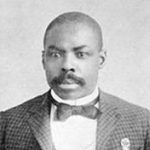
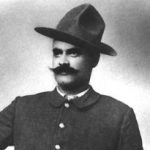 Seldom does it happen that money from a robbery is never recovered, but that is the case for approximately $28,000 in gold and silver coins, which have been missing for more than a century. The money came from the little known Wham Paymaster Robbery, which occurred near Pima, Arizona. Eight suspects were caught and tried for the crime, but in the end, they walked away free men. The circumstances of the robbery remain an unsolved mystery to this day. The robbery of US Army Paymaster, Major Joseph Washington Wham occurred on May 11, 1889 in the early morning hours. Wham was preparing to make the trip from Fort Grant to Fort Thomas to pay the soldiers’ salaries. The day before, he had distributed the pay to Fort Grant. That day, he was to pay the men at Fort Thomas, Camp San Carlos, and Fort Apache.
Seldom does it happen that money from a robbery is never recovered, but that is the case for approximately $28,000 in gold and silver coins, which have been missing for more than a century. The money came from the little known Wham Paymaster Robbery, which occurred near Pima, Arizona. Eight suspects were caught and tried for the crime, but in the end, they walked away free men. The circumstances of the robbery remain an unsolved mystery to this day. The robbery of US Army Paymaster, Major Joseph Washington Wham occurred on May 11, 1889 in the early morning hours. Wham was preparing to make the trip from Fort Grant to Fort Thomas to pay the soldiers’ salaries. The day before, he had distributed the pay to Fort Grant. That day, he was to pay the men at Fort Thomas, Camp San Carlos, and Fort Apache.
Wham, along with his clerk, William Gibbon, and Private Caldwell, his servant and mule tender, climbed into a canopied wagon driven by Buffalo Soldier, Private Hamilton Lewis for the 46 mile trip to Fort Thomas. The payroll Wham was still in possession of was more than $28,000 in gold and silver coins. It was locked in an oak strongbox in the wagon. Given the amount of money Wham was carrying, he was heavily escorted by nine Buffalo Soldiers of the 24th Infantry on horseback, as well as a wagon that carried two privates of the 10th Cavalry (also an African-American regiment) that was driven by a civilian employee of the Quartermaster Department. Everyone was heavily armed, except Wham, his clerk and the two drivers. An African-American female gambler named Frankie Campbell, joined them at the last minute. She wanted to ride along with them to be in Fort Thomas when the soldiers got paid…to stir up a game or two, I’m sure.
About 15 miles west of Pima in the Gila River Valley, just after midday, the caravan came to a stop. A large boulder was blocking the road, and the wagons were unable to get around it. The soldiers lay down their weapons in order to dislodge the large rock. They barely got started when a cry came from a ledge some 60 feet above on the adjacent hill, “Look out, you black sons of bitches!” and bullets began to hail down upon the soldiers. Three of the 12 mules pulling the wagons were killed and the other animals panicked, rearing and pulling both vehicles off the road. The soldiers ran for their guns and took cover to fight the barrage of bullets raining down on them from the hills. Sergeant Benjamin Brown was shot but continued to return fire with his revolver. Private James Young ran through heavy gunfire and carried Brown more than 100 yards to safety. Corporal Isaiah Mays then took command, ordering the entourage to retreat to a creek bed about 300 yards away, while Major Wham strongly protested. The battle continued to rage on for about a half an hour as the soldiers valiantly tried to protect the payload. However, eight of Wham’s eleven-man escort were severely wounded and the battle had become extremely one-sided. During all this, gambler, Frankie Campbell, who had been riding ahead of the caravan, had been thrown from her horse and had taken cover.
With the soldiers hidden, wounded, and severely out gunned, five bandits then made their way to the wagon. Once there, they cracked the strongbox with an ax, and carried off the U.S. Treasury sacks filled with the coins. The soldiers counted 12 outlaws, who made their escape. At about 3:00pm those, who could manage, made their way from the creek bed to the wagons. They spliced harnesses together, gathered some of the surviving mules, and finally made their way to Fort Thomas, arriving about 5:30pm. The soldiers left, Frankie Campbell to tend to the severely wounded, including Sergeant Benjamin Brown. These men would be brought in later. Amazingly, all of the soldiers would survive their wounds, so she must have done a good job with their care.
Amazingly, several of the bandits, who had not thought to cover their faces during the gun battle, were recognized and very soon arrested. US Deputy Marshal William Kidder Meade, and the Graham County Sheriff arrested 11 men, most of whom were citizens of Pima, Arizona. Seven were bound over for trial. The men were Gilbert Webb, the Mayor of Pima at the time. Webb was the suspected leader of the gang. Also arrested was his son, Wilfred. These men were already suspected of numerous thefts in the area. Along with the Webbs, brothers Lyman and Warren Follett, as well as David Rogers, Thomas Lamb, and Mark Cunningham, all of whom worked as cowboys for Gilbert Webb. Strangely, the men were charged with the robbery, but no one was ever charged with the shooting.
The trial in Federal Court in Tucson was held in November lasted 33 days. It was big news in the Southwest. With all the witnesses, I cant figure out how they could not be found guilty, but from the beginning, the trial involved major politics and infighting, including removing the original judge. In all, 165 witnesses testified at the trial, including five Buffalo Soldiers who identified three of the accused. Another witness testified that he had personally seen some of the men hiding the loot in a haystack and burning the US treasury sacks. Several other witnesses testified that they had seen members of the accused in the area of the ambush the day before…probably setting up their “hideouts” from which the ambush took place. Strangely, Frankie Campbell, who had stated she recognized several of the bandits, including the leader, Gilbert Webb, was never called to testify. The defense lawyer was the famed Marcus Aurelius Smith, and in the end all of the men were acquitted.
Afterward, it was widely claimed that political pressure from the acting governor allowed the thieves to go free. The entire case was a hotbed of religion, racism, and politics, as Pima, Arizona was founded as a Mormon Colony, of which Gilbert Webb was the mayor, one of the most influential men in the area, and came from a long line of pioneer Mormons. He was also known in the area as a generous man, providing jobs for struggling neighbors, extending credit, and providing provisions. Though most of the other accused men were not Mormons, they all lived in the Mormon colony, having many ties to the church through friends and relatives. Be it politics or religion, a great injustice was done that day. Many locals viewed the robbery and trial as an embarrassing disgrace to the town and its people, and to talk about it about might offend friends or neighbors, or bring shame upon the colony. Therefore, the robbery was kept largely under wraps. The locals called the robbers “Latter-Day Robin Hoods.”
In the meantime, Major Joseph Washington Wham, as the commanding officer, was held accountable for the loss of the money but was later absolved of any guilt. Two of the Buffalo Soldiers were awarded the Medal of Honor for their part in the gun battle with the bandits. Although shot in the abdomen, Sergeant Benjamin Brown continued the fight until he was further wounded in both arms. Corporal Isaiah Mays also received the Medal of Honor, as near the end of the gun battle, though shot in the legs, he “walked and crawled two miles to Cottonwood Ranch and gave the alarm.” Other Buffalo Soldiers cited for bravery in the incident received the Certificate of Merit. These included Hamilton Lewis, Squire Williams, George Arrington, James Wheeler, Benjamin Burge, Thomas Hams, James Young, and Julius Harrison of the 10th Cavalry and 24th Infantry. US 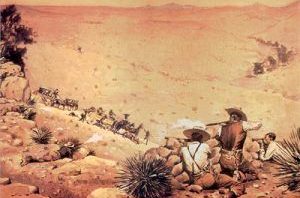
 Deputy Marshal Meade, who would bring in the bandits, would say of the soldiers, “I am satisfied a braver or better defense could not have been made under like circumstances.” Throughout the years, the robbery has created a number of various treasure tales, suggesting that some of the coins are still hidden in the area somewhere. However; with all of the suspects set free, this would seem doubtful.
Deputy Marshal Meade, who would bring in the bandits, would say of the soldiers, “I am satisfied a braver or better defense could not have been made under like circumstances.” Throughout the years, the robbery has created a number of various treasure tales, suggesting that some of the coins are still hidden in the area somewhere. However; with all of the suspects set free, this would seem doubtful.
 My niece, Lacey Stevens has turned into an amazing girl, right before our eyes. For many years, Lacey was kind of a shy girl, and I didn’t really expect her to become the exuberant woman she has become. I guess that was my error, because Lacey is a very capable, and rather outgoing woman. Lots of people outgrow shyness, and I guess she did just that.
My niece, Lacey Stevens has turned into an amazing girl, right before our eyes. For many years, Lacey was kind of a shy girl, and I didn’t really expect her to become the exuberant woman she has become. I guess that was my error, because Lacey is a very capable, and rather outgoing woman. Lots of people outgrow shyness, and I guess she did just that.
After high school, Lacey decided to become a cosmetologist, and after going to school for that, began her career, but our Lacey was destined for greater things. She still in the same field, but she now holds the position of salon manager. The truth is that she  is pretty young to be in that position, but as I said, she is an amazing woman. The people who work under her, as well as those who work, over her are very pleased with her abilities, indeed. Part of Lacey’s job is to help draw business into the salon, and she is quite good at doing just that. It’s a win-win situation for everyone when the slots are all full. Better for business all the way around.
is pretty young to be in that position, but as I said, she is an amazing woman. The people who work under her, as well as those who work, over her are very pleased with her abilities, indeed. Part of Lacey’s job is to help draw business into the salon, and she is quite good at doing just that. It’s a win-win situation for everyone when the slots are all full. Better for business all the way around.
Lacey also organized any events that might take place as a part of the salon. Recently, they held the “Cut for a Cause” event, in which all of the specified profits of the day were donated for breast cancer research. It was a  great way for Lacey and the staff at Ulta Beauty to give back to the community and make a difference for many people through important research.
great way for Lacey and the staff at Ulta Beauty to give back to the community and make a difference for many people through important research.
Of course, work is not all Lacey is about. She became an aunty on August 3, 2018, when her brother, Garrett and his wife, Kayla had a baby girl named Elliott. Becoming an aunt for the first time is always special, and little Elliott is such a smiley girl, that her family can’t help but smile too. Lacey and Elliott are great friends, and that will only get better. Elliott is a long awaited addition to the Stevens family, and we are all quite happy about her arrival. Today is Lacey’s birthday. Happy birthday Lacey!! Have a great day!! We love you!!
 For the over 45 years that I have known my husband’s aunt, Margee Kountz, I have understood that she is the rock of her family. I say that I understood it, because over the years I have watched as different events have unfolded within her family, and it is Margee who always steps in to hold the family together. Margee was a single mom for most of her children, Dan and Sandy’s lives. Her children and grandchildren, and now great grandchildren have always been the joy of her life. Margee’s life has not been without loss…a daughter-in-law and a grandson, plus her parents, and both of her sisters. Margee is the last one of her generation in her family who is still living.
For the over 45 years that I have known my husband’s aunt, Margee Kountz, I have understood that she is the rock of her family. I say that I understood it, because over the years I have watched as different events have unfolded within her family, and it is Margee who always steps in to hold the family together. Margee was a single mom for most of her children, Dan and Sandy’s lives. Her children and grandchildren, and now great grandchildren have always been the joy of her life. Margee’s life has not been without loss…a daughter-in-law and a grandson, plus her parents, and both of her sisters. Margee is the last one of her generation in her family who is still living.
Margee stepped in to help raise her son’s two children, and to give them a stable life. She also helped to raise her daughter’s three children. I learned when I had my own grandchildren that with working parents, it takes a village to raise a child. Our kids need “involved” grandparents, and I can’t think of a greater blessing for a grandparent than spending time with their amazing grandkids. Margee has been a great help to her kids and grandkids, and they are very close to Margee, even as adults.
These days, the grandkids are the ones to help Margee. As her health isn’t as good  as it was, she sometimes needs help with things. Because of the close relationship the grandkids have had with Margee, they are happy to help her. They love her after all, and anyone who knows Margee, and what a loving and caring person she is, can see exactly why they love her. Margee is the person who would give you her last nickel, if you needed it.
as it was, she sometimes needs help with things. Because of the close relationship the grandkids have had with Margee, they are happy to help her. They love her after all, and anyone who knows Margee, and what a loving and caring person she is, can see exactly why they love her. Margee is the person who would give you her last nickel, if you needed it.
For as long as I have known her, I have felt very blessed by her. From her cake decorating years, during which we could count on the best looking cakes for parties, to her willingness to help with any event that was being held, made her a valued member of our family…and one we never want to be without. Today is Margee’s birthday. Happy birthday Margee!! Have a great day!! We love you!!

